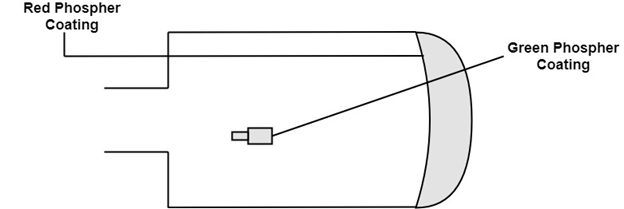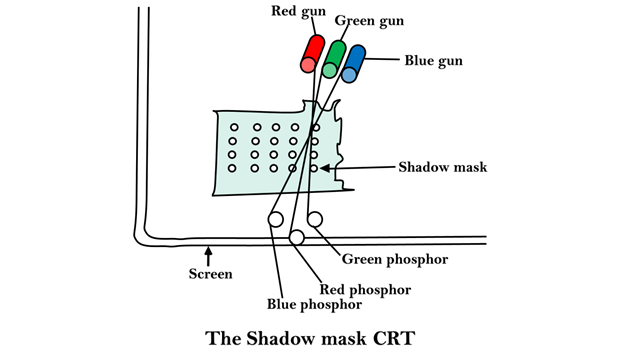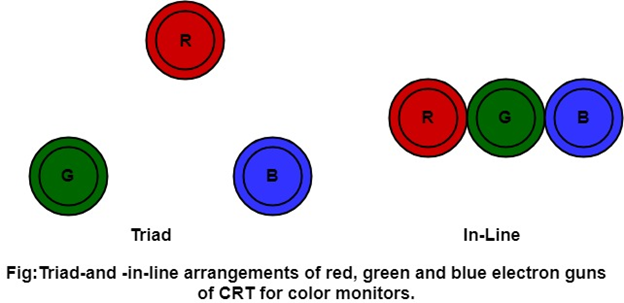Computer Graphics
Graphic Systems
Input-Output Devices
Scan Conversion a line
Scan Conversion Circle
Scan Converting Ellipse
Filled Area Primitives
2D Transformations
2D-Viewing
Clipping Techniques
Pointing & Positioning
3D Computer Graphics
Hidden Surfaces
Projection
Programs
Color CRT Monitors
The CRT Monitor display by using a combination of phosphors. The phosphors are different colors. There are two popular approaches for producing color displays with a CRT are:
- Beam Penetration Method
- Shadow-Mask Method
1. Beam Penetration Method:
The Beam-Penetration method has been used with random-scan monitors. In this method, the CRT screen is coated with two layers of phosphor, red and green and the displayed color depends on how far the electron beam penetrates the phosphor layers. This method produces four colors only, red, green, orange and yellow. A beam of slow electrons excites the outer red layer only; hence screen shows red color only. A beam of high-speed electrons excites the inner green layer. Thus screen shows a green color.

Advantages:
- Inexpensive
Disadvantages:
- Only four colors are possible
- Quality of pictures is not as good as with another method.
2. Shadow-Mask Method:
- Shadow Mask Method is commonly used in Raster-Scan System because they produce a much wider range of colors than the beam-penetration method.
- It is used in the majority of color TV sets and monitors.
Construction: A shadow mask CRT has 3 phosphor color dots at each pixel position.
Polymorphism in Java | Dynamic Method Dispatch
- One phosphor dot emits: red light
- Another emits: green light
- Third emits: blue light
This type of CRT has 3 electron guns, one for each color dot and a shadow mask grid just behind the phosphor coated screen.
Shadow mask grid is pierced with small round holes in a triangular pattern.
Figure shows the delta-delta shadow mask method commonly used in color CRT system.


Working: Triad arrangement of red, green, and blue guns.
The deflection system of the CRT operates on all 3 electron beams simultaneously; the 3 electron beams are deflected and focused as a group onto the shadow mask, which contains a sequence of holes aligned with the phosphor- dot patterns.
When the three beams pass through a hole in the shadow mask, they activate a dotted triangle, which occurs as a small color spot on the screen.
The phosphor dots in the triangles are organized so that each electron beam can activate only its corresponding color dot when it passes through the shadow mask.
Inline arrangement: Another configuration for the 3 electron guns is an Inline arrangement in which the 3
electron guns and the corresponding red-green-blue color dots on the screen, are aligned along one scan line rather of in a triangular pattern.
This inline arrangement of electron guns in easier to keep in alignment and is commonly used in high-resolution color CRT's.

Advantage:
- Realistic image
- Million different colors to be generated
- Shadow scenes are possible
Disadvantage:
- Relatively expensive compared with the monochrome CRT.
- Relatively poor resolution
- Convergence Problem


